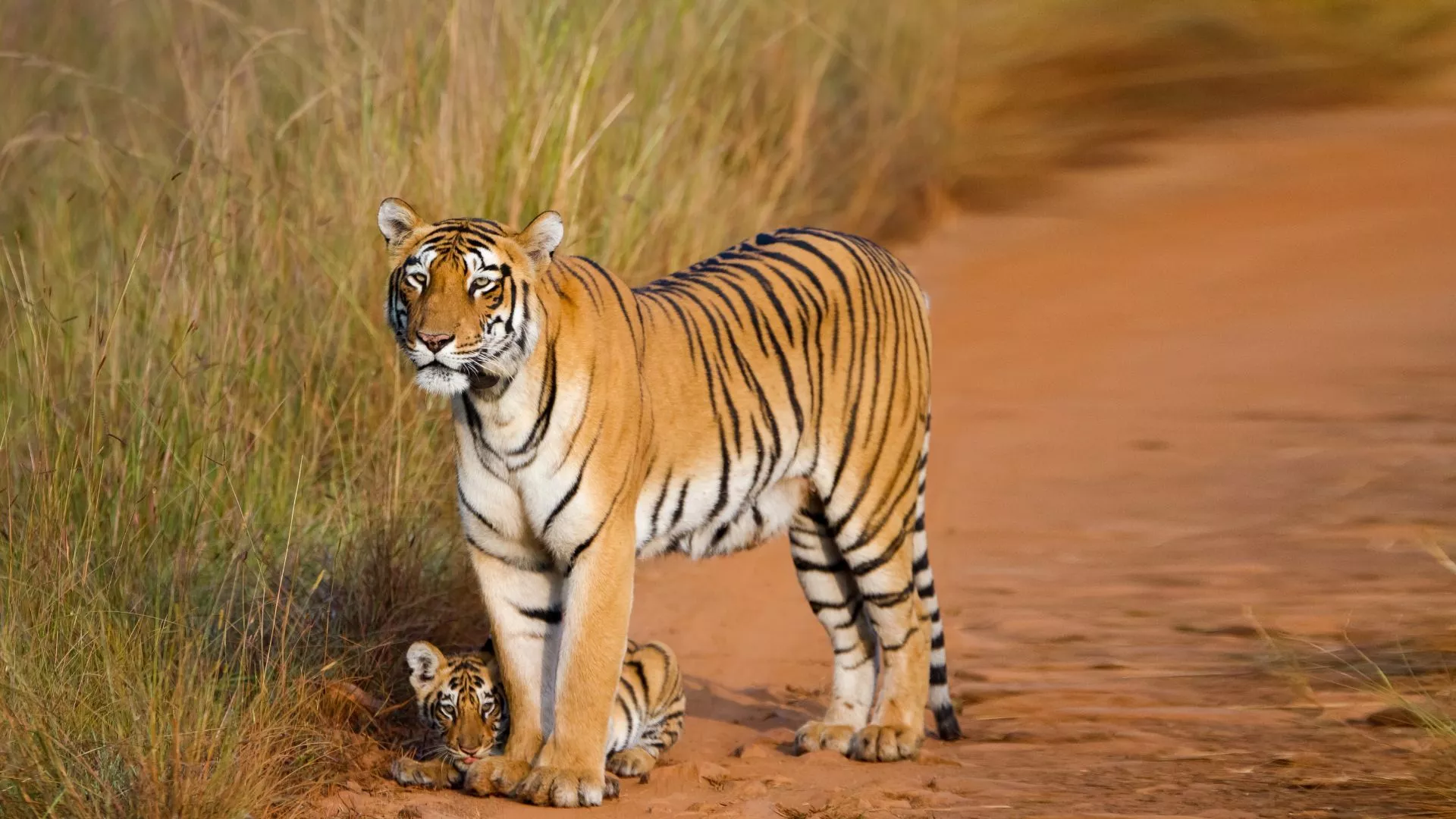U.S. and Indian researchers study ways to protect wildlife corridors allowing tigers mobility to survive and thrive.
January 2023

Researchers at New York City-based Columbia University and the Network for Conserving Central India (NCCI) worked on a joint study to find an appropriate balance between tiger conservation and development, especially in the face of rapid urbanization. (Photograph by Rajkumar Natarajan/iStock/Getty Images)
As India’s national animal, the tiger has long been a focus of conservationists. In spite of rapid urbanization, poaching and human-animal conflicts, the tiger population has more than doubled in the country. From 1,411 tigers during the first tiger census in 2006 to 2,967 in 2018, the Wildlife Institute of India has recorded an approximately 6 percent per annum increase in tiger population over the years.
Most of the world’s tigers–75 percent of the total number of tigers by Indian government estimates—live in India, making it a key player in global efforts to protect the species. India has 53 tiger reserves, which are connected to other tiger-safe habitats through wildlife corridors. These corridors are protected natural thoroughfares that enable the big cats and other animals to move from one habitat to another.
While these corridors are vital to the continued survival and growth of India’s tiger population, they must coexist with the lives and livelihoods of local people and also acknowledge other demands on the land they occupy. Finding an appropriate balance between conservation and development was the overall goal of a collaborative U.S.-India study led by researchers at New York City-based Columbia University and the Network for Conserving Central India (NCCI), where the idea for the study originated. Published in 2022, this study was based on five previously published studies on tiger connectivity in central India.
“Corridors ensure that a species, like the tiger, can maintain healthy and genetically-diverse populations,” says Jay Schoen, a Ph.D. candidate at Columbia University’s Ecology and Evolutionary Biology Program and a co-author of the study. “Species can only survive in small pockets for so long before the detrimental effects of inbreeding and the loss of genetic diversity render them unlikely to survive long-term. By promoting and restoring natural connectivity between populations–the way tigers existed for millions of years–we can give them the opportunity to continue exchanging genes between core protected areas, thus keeping healthy levels of genetic diversity in the population.”
Amrita Neelakantan, coordinator at NCCI; Uma Ramakrishnan, professor at the National Centre for Biological Sciences in Bengaluru and a Fulbright-Nehru fellow, and Schoen worked with other researchers to synthesize the results of five studies of tiger connectivity in central India, where humans and wildlife live in close proximity. Understanding these corridors is essential to better inform local populations, commercial developers, land managers and government officials, and to promote healthy coexistence between people and nature.
Many of India’s tigers live in its central region, a densely populated area encompassing protected reserves, forest patches, farms, villages and cities. It is also a globally recognized priority landscape for tiger conservation. With both the population and infrastructure projects in the area expanding, tiger conservationists must win the support and approval of local residents whose livelihoods rely on small-scale agriculture, cattle rearing and collection of forest products.
“Rural central India is changing. As livelihoods become more commercial, the relationships with wildlife and tolerance of losses to wildlife also change,” says Neelakantan. “Modern conservation tools rooted in understanding the challenges of local people are an exciting path forward. We hope to aid bottom-up approaches to restoration, enhanced livelihood options and other avenues where humans and wildlife interact in safer ways for all involved.”
Recognizing that groups affected by wildlife corridors may have different–and sometimes conflicting–priorities, the researchers stressed that multiple viewpoints should be considered in reaching decisions concerning corridors.
They explain that conservation efforts focused on tigers have multiple benefits that go beyond one species. “Conserving large areas required by tigers will also conserve space for other plants, animals and microbes, which are all critical to healthy natural processes that people and wildlife depend on,” says Schoen.
“The primary goal of this study was to discern a clear message from the latest research on how tigers are moving between core populations in central India,” he says. “This message was meant for those responsible for land-use decisions in this landscape as well as those impacted by these decisions, so that the many stakeholders involved can find amenable, scientifically informed solutions for nature and humans.”
India’s success in preserving and growing its tiger population is an example for conservationists everywhere, Ramakrishnan notes.
“India is such a fascinating and complex place,” she says. “That these large and dangerous carnivores can survive, and thrive here, cheek-to-jowl with so many people, is just amazing. The conservation success of tigers in India is a beacon of hope for conservation and recovery for all endangered species.”
Steve Fox is a freelance writer, former newspaper publisher and reporter based in Ventura, California.
COMMENTS